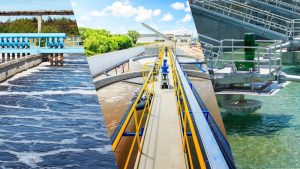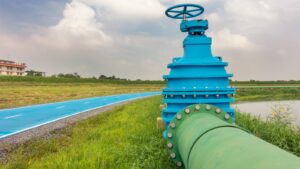Water treatment in Australia receives much attention when it comes to the country’s industrial realm, as it determines the overall water requirements of its general public. Not to mention that water treatment requires several investments, from machinery and a workforce to processes. It is highly essential to ensure the water they are distributing is up to industry standards and complies with Australian and WHO (World Health Organisation) health regulations. The best way to extract unwanted contamination and toxins from the water is through the utilisation of chemicals in proper quantity and quality. However, this application can cause severe damage to the environment.
Is there any way to safeguard the environment from the potential harm caused by the chemicals that are used in the water treatment processes?
Is there any way to safeguard the environment from the potential harm caused by the chemicals that are used in the water treatment processes?
We will explore
- Why Do the Water Treatment Processes Need Chemicals?
- Top 4 Methods to Ensure Water Treatment Chemicals are Harmless for the Environment
- Membrane Filtration Technologies
- Natural Filtration Systems
- Advanced Oxidation Processes (AOPs)
- Green Chemistry Principles
3. Safeguarding the Environment via Sustainable Water Treatment Procedures
Why Do the Water Treatment Processes Need Chemicals?
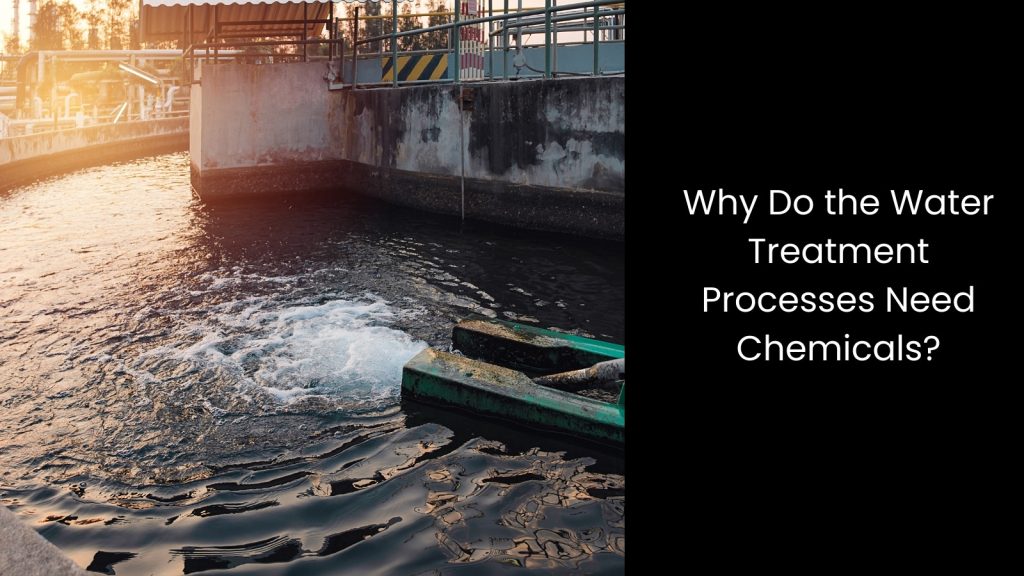
- As we stated in the introduction, water treatment processes require chemicals to effectively remove contaminants and other harmful elements from water sources. Yes, this means that the chemicals play various crucial roles in the treatment process.
- Let us explain them one by one. The process goes like this: chemicals, if named disinfectants like chlorine, are added to kill harmful bacteria, viruses, and other microorganisms present in the water, ensuring it is safe for consumption. Also, coagulants and flocculants are used to aggregate small particles suspended in the water. This allows them to settle and be easily removed during filtration.
- Another application is adjusting the pH level of water with chemicals. This helps optimise treatment efficiency and ensures the water is neither too acidic nor too basic, which can affect its taste and safety. Is that all? No! Other various types of chemicals aid in removing organic pollutants and neutralising toxins, and they also assist in balancing out the water quality.
- It is true that these chemicals are essential for effective water treatment. Yet, it is equally important to carefully manage their use to minimise environmental impact. However, this can be challenging for the water authorities.
- This is why they have paid attention to developing and employing eco-friendly alternatives and advanced treatment methods within the water treatment framework. It is the best and most practical way to ensure water treatment processes remain both effective and sustainable.
Top 4 Methods to Ensure Water Treatment Chemicals are Harmless for the Environment
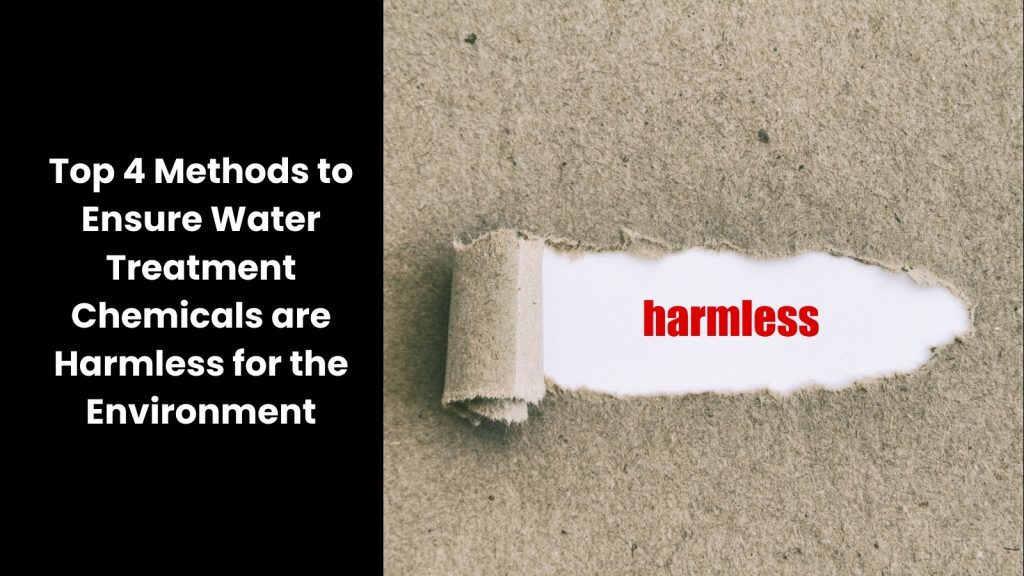
Membrane Filtration Technologies
Membrane filtration technologies, such as reverse osmosis or nanofiltration, are advanced methods used to purify water sustainably. Let us explain how this is practically done. The speciality of this is that it employs physical barriers to separate contaminants from the water without the use of chemical additives.
Its mechanism is quite interesting to explore. These processes work by forcing water through semi-permeable membranes that selectively allow water molecules to pass while blocking larger molecules and particles, effectively removing contaminants such as bacteria, viruses, chemicals, and other pollutants.
As it encourages relying on physical barriers rather than chemical treatments, membrane filtration technologies produce clean water without leaving behind chemical residues. This strategy helps reduce the environmental impact associated with traditional water treatment methods.
However, it is important to ensure that membrane filtration technologies remain harmless to the environment. This is why it is necessary to properly maintain and monitor the filtration systems to prevent membrane fouling and degradation. Otherwise, this can lead to increased energy consumption and waste generation.
Another approach that is suitable is conducting regular testing and quality control measures. The latter should be implemented to ensure that the membranes are functioning efficiently and effectively, removing contaminants.
Its mechanism is quite interesting to explore. These processes work by forcing water through semi-permeable membranes that selectively allow water molecules to pass while blocking larger molecules and particles, effectively removing contaminants such as bacteria, viruses, chemicals, and other pollutants.
As it encourages relying on physical barriers rather than chemical treatments, membrane filtration technologies produce clean water without leaving behind chemical residues. This strategy helps reduce the environmental impact associated with traditional water treatment methods.
However, it is important to ensure that membrane filtration technologies remain harmless to the environment. This is why it is necessary to properly maintain and monitor the filtration systems to prevent membrane fouling and degradation. Otherwise, this can lead to increased energy consumption and waste generation.
Another approach that is suitable is conducting regular testing and quality control measures. The latter should be implemented to ensure that the membranes are functioning efficiently and effectively, removing contaminants.
Natural Filtration Systems
Another outstanding approach to ensuring the chemicals are not harming the environment is to implement natural filtration systems, such as constructed wetlands or biofiltration. Why is this unique? The main reason is that it utilises the power of natural processes to purify water without the use of chemical additives. These systems replicate the functions of natural ecosystems by utilising vegetation, soil, and microorganisms to filter contaminants from water.
Those constructed wetlands usually consist of shallow ponds or channels planted with wetland vegetation. This absorbs nutrients and traps sediment, while beneficial bacteria break down organic pollutants. This is what happens in general. Similarly, biofiltration systems utilise layers of organic material, such as wood chips or compost, to provide a habitat for microorganisms that degrade pollutants as water passes through.
The strategy that is being used is mimicking the processes found in natural environments. This way, these filtration systems effectively remove contaminants and improve water quality in a sustainable manner.
However, it is a responsibility to make sure that these natural filtration systems are harmless to the environment. This weight lies in the proper design and regular maintenance.
Those constructed wetlands usually consist of shallow ponds or channels planted with wetland vegetation. This absorbs nutrients and traps sediment, while beneficial bacteria break down organic pollutants. This is what happens in general. Similarly, biofiltration systems utilise layers of organic material, such as wood chips or compost, to provide a habitat for microorganisms that degrade pollutants as water passes through.
The strategy that is being used is mimicking the processes found in natural environments. This way, these filtration systems effectively remove contaminants and improve water quality in a sustainable manner.
However, it is a responsibility to make sure that these natural filtration systems are harmless to the environment. This weight lies in the proper design and regular maintenance.
Advanced Oxidation Processes (AOPs)
Advanced Oxidation Processes, or AOPs, as you may have heard, are innovative techniques used in water treatment. This has the power to eliminate organic contaminants without relying on potentially harmful chemical additives.
AOPs utilise powerful oxidants like ozone, hydrogen peroxide, or UV radiation to break down organic pollutants present in water into harmless byproducts through oxidation reactions. These processes effectively degrade complex organic molecules, such as pesticides, pharmaceuticals, and industrial chemicals, into simpler, less harmful substances.
This is where it differs from traditional chemical treatments! AOPs do not introduce additional chemicals into the water. This reduces the risk of environmental contamination by more than 80%. The actual secret lies in the oxidative power of natural compounds or energy sources. This way, AOPs offer a sustainable and eco-friendly solution for water treatment.
But the real challenge kicks off afterwards. Do you know what that is? If there is no proper management of byproducts and waste generated during AOPs, the water treatment processes will remain toxic to the environment. This is why pre-planning is important in AOPs.
AOPs utilise powerful oxidants like ozone, hydrogen peroxide, or UV radiation to break down organic pollutants present in water into harmless byproducts through oxidation reactions. These processes effectively degrade complex organic molecules, such as pesticides, pharmaceuticals, and industrial chemicals, into simpler, less harmful substances.
This is where it differs from traditional chemical treatments! AOPs do not introduce additional chemicals into the water. This reduces the risk of environmental contamination by more than 80%. The actual secret lies in the oxidative power of natural compounds or energy sources. This way, AOPs offer a sustainable and eco-friendly solution for water treatment.
But the real challenge kicks off afterwards. Do you know what that is? If there is no proper management of byproducts and waste generated during AOPs, the water treatment processes will remain toxic to the environment. This is why pre-planning is important in AOPs.
Green Chemistry Principles
In order to avoid damage to the environment in Australia, a concept known as ‘Green Chemistry Principles’ has been introduced. This helps with the design and synthesis of chemicals that minimise their impact on human health and the environment throughout their entire life cycle. Implementing these principles in the development of water treatment chemicals ensures that they are less toxic and somewhat environmentally bearable.
This indicates one network of processes. It includes various strategies such as minimising waste generation, using safer solvents and reaction conditions, designing chemicals that degrade into harmless byproducts after use, etc. The latter concept mainly focuses on the principles of sustainability, efficiency, and safety. That is why green chemistry goes on to create chemical products and processes that are inherently safer and more sustainable.
As per the various tests done by water experts in Australia, adhering to green chemistry principles is a reliable and cost-effective way to reduce the environmental impact of water treatment chemicals.
This indicates one network of processes. It includes various strategies such as minimising waste generation, using safer solvents and reaction conditions, designing chemicals that degrade into harmless byproducts after use, etc. The latter concept mainly focuses on the principles of sustainability, efficiency, and safety. That is why green chemistry goes on to create chemical products and processes that are inherently safer and more sustainable.
As per the various tests done by water experts in Australia, adhering to green chemistry principles is a reliable and cost-effective way to reduce the environmental impact of water treatment chemicals.
Safeguarding the Environment via Sustainable Water Treatment Procedures
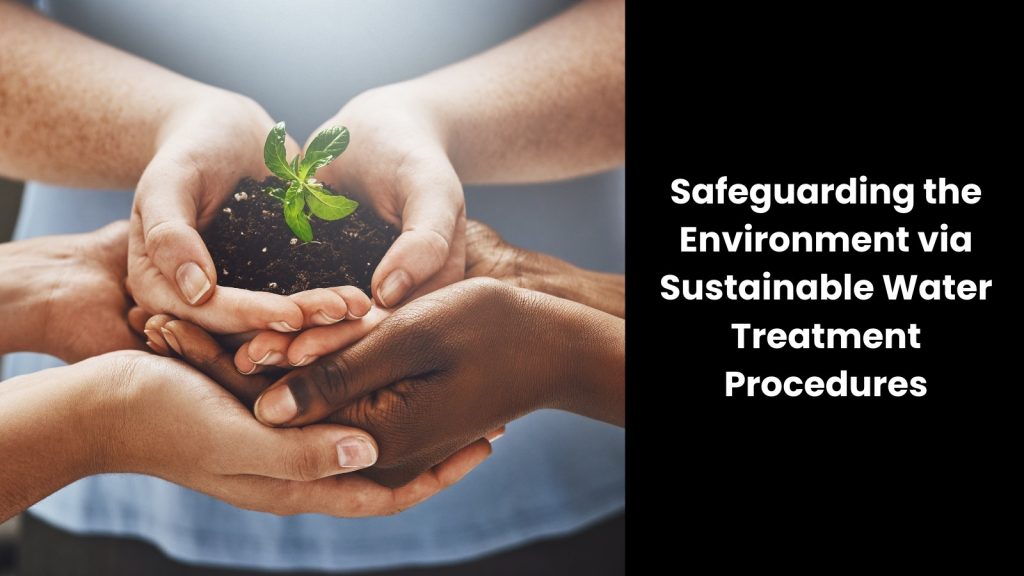
It is important to fulfil the water needs of a country’s population. However, it is equally vital to safeguard the environment, as it directly impacts the protection of the earth and the lives on it. There are many technologies emerging day by day to help with these green initiatives in the industrial world. If it is the right technology, it has to save costs, enhance efficiency, and optimise procedures, all while keeping a green footprint. This is why the water industry needs the help of an industry expert who can strike the right balance between all of these aspects.

